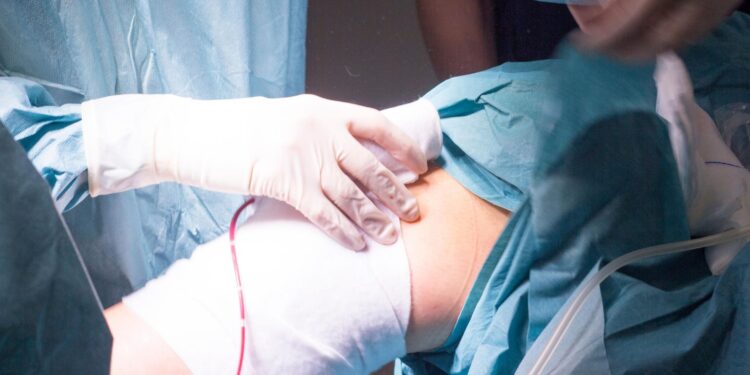Knee is the largest joint in the body and having healthy knee is required to perform most every day activities. The most common cause of chronic knee pain and disability is arthritis. Although there are many types of arthritis, most common knee pain is caused by just three types of arthritis –
– Osteoarthritis
– Rheumatoid Arthritis &
– Post Traumatic Arthritis
Knee replacement , also known as knee arthroplasty might be more accurately termed a knee surfacing surgery as only the surface of bones are actually replaced . The decision to have a TKR should be a cooperative one between you, your family, your family physician and your orthopaedic surgeon.
When is surgery recommended?
- Severe knee pain or stiffness that limits your everyday activities including walking, climbing stairs and getting in and out of chair.
- Moderate or severe knee pain while resting.
- Chronic knee inflammation and swelling that does not improve with rest or medication.
- Knee deformity – a bowing in and out of your knee.
Recommendations for surgery are based on patient’s pain and disability & NOT ON AGE. Total knee replacements have been performed successfully performed at all ages, from young teenager with juvenile arthritis to elderly patient with degenerative arthritis.
Knee replacement surgery is really a cartilage replacement. The knee itself is not replaced but only the damaged cartilage and bone ends are replaced .The implant is designed to create a new, smooth functioning joint that can prevent painful bone on bone contact. Your surgeon may elect to replace all or part of your knee, depending on your condition and extent to which your knee is affected by arthritis.
In patient with only limited arthritis, known as MEDIAL COMPARTMENT ARTHRITIS, surgeons may elect to perform a partial knee replacement. Unlike total knee replacement that removes all the knee joint surfaces, a partial knee replacement replaces only one side of the knee joint. Advantages of partial knee replacement is that it removes 75% less bone and cartilage, is less painful, enables a more rapid recovery and provides more natural motion when compared to a total knee replacement . By retaining all of the undamaged knee parts, the joint may bend and function more naturally.
Knee osteoarthritis usually first occurs in the medial (inside) portion of the joint. In knees that are otherwise healthy, a partial knee replacement can preserve healthy bone, cartilage and ligaments and potentially prevent or delay need for total knee replacement. Partial knee replacement has generated significant interest in view of following advantages –
Smaller incision – traditional knee replacement involves an incision about 8 inches long over front of knee, besides there is significant dissection to complete the procedure. In minimally invasive procedure the incision is 3 inches and amount of dissection and bone removal is much smaller and hence a blood transfusion is infrequently needed. Both the time in the hospital and time to functional recovery are less with partial knee replacement. Most patients are discharged on second to third post operative day. Recovery time varies but most people should be able to drive after two weeks.
However patients with wide spread severe arthritis of the knee that have failed conservative measures like medication , cortisone injections , strengthening exercises and weight loss , total knee replacement should be considered . Besides most patient of arthritis who seek surgical management have arthritis that is too advanced because surgical treatment is considered a last resort , by the time surgery is necessary , arthritis is too advanced to consider minimally invasive procedure .
Total knee replacement is a surgical procedure where by the diseased knee joint is replaced with artificial material. During TKR, the end of femur bone (thigh bone) is removed and replaced with metal shell .The lower end of lower leg bone (tibia) is also removed and replaced with a channelled plastic piece with a metal stem. Depending on the condition of the knee cap portion of knee joint, a plastic button may also be added under the knee cap surface.
Physical therapy is an essential part of rehabilitation after total knee replacement.
Risks of total knee replacement surgery include blood clots in the leg that can travel to the lungs (pulmonary embolism) causing shortness of breadth, chest pain and even shock. Other risks include urinary tract infections , nausea and vomiting ( usually related to pain medication ) chronic knee pain and stiffness , bleeding into the joint , nerve damage , blood vessel injury , infection of the knee requiring reoperation .
Degenerative arthritis can be tremendously debilitating and a life altering condition. What typically begins as subtle discomfort can quickly advance to severe arthritis, which can have significant impact on person’s mobility and quality of life. When arthritic joint surfaces are resurfaced, the original joint pain, caused by exposed bone no longer exists. This gives patient considerable relief and even elimination of pain. When a person is no longer burdened by chronic debilitating pain and joint motion has been improved, the quality of life is improved as well.


